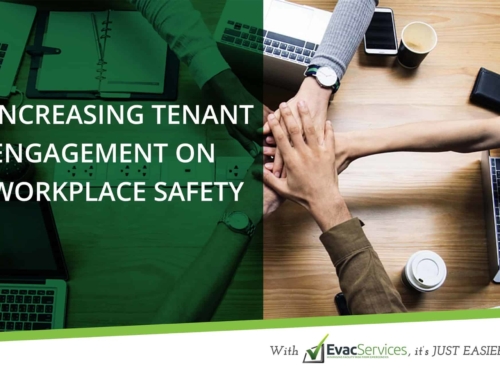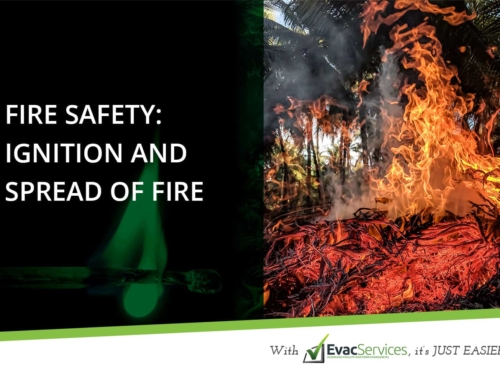Emergency response training and other relevant safety training are vital compliance components that help ensure the safety, health and well-being of your workforce. As a business, this is not just a legal requirement, but also an ethical obligation to uphold employees’ right to a safe workplace.
In most commercial buildings, it is written into lease agreements that employers/tenants like you need to nominate a staff member to be part of the Emergency Control Organisation (Warden team) of the facility. But that’s not the end of your responsibilities to ensure the safety of the site for your staff. The law also mandates employers to provide required safety training and maintain records of that training for all staff within set time frames.
The reality is implementing emergency response training in conjunction with other safety initiatives can be costly and its effects are not immediately visible. However, promoting this brings benefits not just for workers but for the company, as well.
Here are some relevant statistics on the direct and indirect cost of workplace injuries.
- According to Safe Work Australia’s paper on The Business Case for Safe, Health & Productive Work released in November 2014, one workplace accident will cost a business ten times of what it would cost to prevent it.
- Work-related injury and disease cost the Australian economy $61.8 billion in 2012-13, according to Safe Work Australia’s report on the Cost of Work-related Injury and Illness for Australian Employees, Workers and the Community.
- 77% of work-related injury and diseases are shouldered by workers, 18% by the community and 5% by the employers, as stated in Safe Work Australia statistics.
- For every dollar invested in safety programs, businesses will get a return on investment of $3-$6.
Investing in safety decreases workplace accidents and injuries, which leads to reduced medical expenses, lower workers compensation insurance premiums, higher productivity, and smooth business operations. It also increases employee morale, resulting in higher motivation and better team collaboration. Emergency planning will also mitigate damages to infrastructures and other physical business assets. These show the strong correlation between business profitability and workplace safety.
Training delivery matters
Emergency Response and other relevant safety training can be conducted face-to-face, online, or a combination of both. To improve training participation and engagement Through EvacConnect, clients have the option for a mix of online and face-to-face training delivery to improve participation and engagement. Online training, which is available for the warden team as well as individual tenants, allows staff to fit training around their schedule.
The legal component of safety training and general fire and evacuation instructions
Investing in safety is necessary to ensure compliance with relevant Legislation, standards and regulations. Non-compliance could lead to serious legal ramifications and fines that could amount to millions of dollars. This is a direct impact of safety training on business continuity. It is also part of a business’ compliance obligation to ensure that all employees are given general fire and evacuation instructions.
General Fire and Evacuation Instructions
As legally mandated, all employees must be given general fire and evacuation instructions at specific time frames. Records on these activities must also be kept and available upon request. Here are some considerations for you to ensure compliance.
Have general evacuation instructions given:
- within 48 hours of commencing work and then annually?
- include the location of fire safety reference points and the procedures for evacuating the building safely?
Note that there is no requirement for persons with qualifications to provide these instructions, but the instruction must still be given.
All onsite Contractors, i.e. cleaners, security, etc. have obligations in line with this requirement to ensure Sub Contracts ongoing compliance.
Are your records for general evacuation instructions kept, and available upon request?
Details on the instruction records must include:
- the name of each receiving the instruction
- the name of the individual who gave the instruction
- the date instructions were given
- a description of the instructions
Have first response evacuation instructions been given?
- regarding the operation of manually operated fire alarms and firefighting equipment in the building?
- within 30 days of commencing work and then every two years?
For high occupancy buildings, a Fire Safety Advisor or a Registered Training Organisation must give the training or instructions.
All onsite Contractors, i.e. cleaners, security, etc., have obligations in line with this requirement to ensure Sub Contracts ongoing compliance.
Workplace safety is a priority
It can be challenging to get the support of upper management, especially when visible business benefits from workplace safety projects take time. While cost savings and increased workforce productivity are a good motivation to improve safety, human capital will always be the best return on investment. Implementing emergency response training and other safety initiatives should not be done simply because of the dollars. The priority should always be to keep people in your care safe.
Do you need help with workplace safety? We at EvacServices are committed to empowering businesses and organisations save lives during emergencies. Click here to discover how we’ve helped RMIT achieve tangible safety improvements through our emergency management capabilities.





Leave A Comment